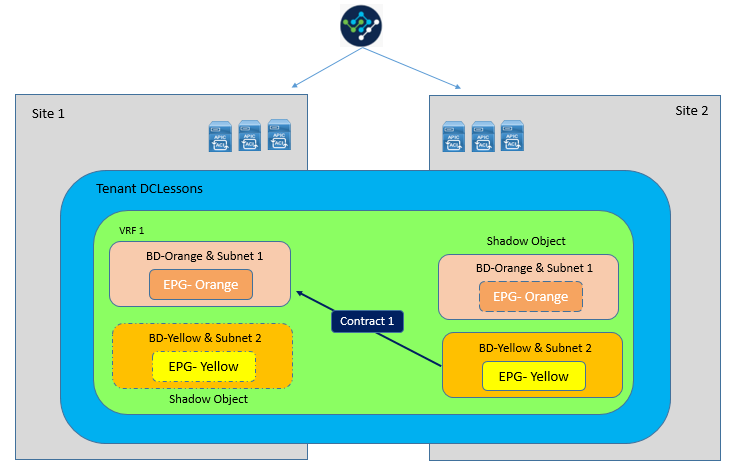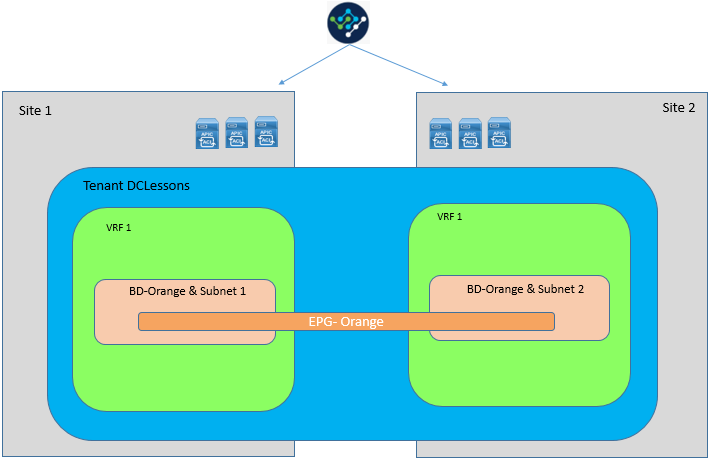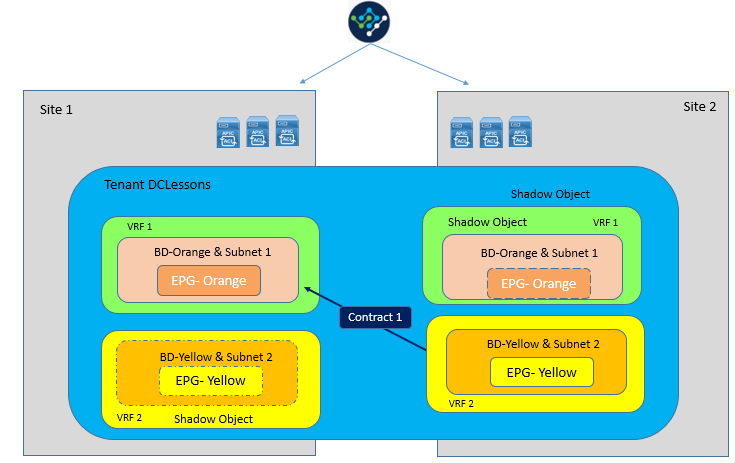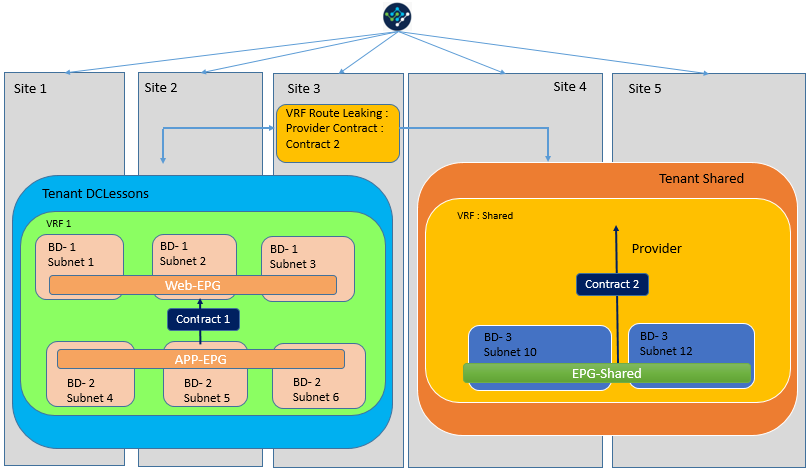EMAIL SUPPORT
dclessons@dclessons.comLOCATION
USMulti-Site Bridge Domain Configuration
When we deploy the Multi-Site on an Enterprise, we have to use different BD configuration option to achieve use case like disaster avoidance or disaster recovery.
Here we will see different BD configuration options available.
When there is only L3 connectivity across sites
In this scenario, if there is requirement is to keep the Site connectivity in routed mode and there is no Layer 2 extension or Flooding allowed and different BD and IP subnets are defined in separate sites.
In order to achieve this use case, there are various options available to achieve his.
Option1: Intra VRF communication:
In this scenario Source and Destination EPG belong to different BD but are mapped to same VRF with same Tenant. In this the Tenant and VRF instance are stretched across sites and MP-BGP EVPN is used to exchange host routing information for intersite communication.

In the above figure, as soon as Contracts between EPG Orange and EPG Yellow is created, its shadow EPG objects will be created in respective remote sites.
Now when in this scenario only, When EPG is stretched across Sites and BD attached to this EPG is configured as Layer 2 stretched Object, in this case, you can configure different Subnet to BD in each site. In this case Endpoint communication who are in this EPG will be routed and therefore there is no requirement to create Contract between them, because intra EPG communication is allowed by default.

Option 2: Inter-VRF Communication
In this scenario, Source and Destination BD are part of different VRF (same or different Tenants) , so here there is requirement of route leaking between these VRF and this is done by creating the contracts between source and destination EPG and also by configuring the Subnet under provider EPG.
Below figure shows inter VRF communication across Sites.

Option 3 : Shared Services:
When there is a requirement to access a shared services which in separate VRF instance , by some Subnets or IP in different VRF, that is to provide n:1 connectivity, the solution for this to create the proper security policies between Source EPG and Shared Services EPG.
Below figure explains about Inter-VRF communication between sites for Shared Services.

When there is Layer 2 Connectivity across sites without flooding
In this scenario, when there is Layer 2 Connectivity across sites without flooding enabled, and still IP mobility is required, Cisco Multi-Site feature provides support on this.





LEAVE A COMMENT
Please login here to comment.